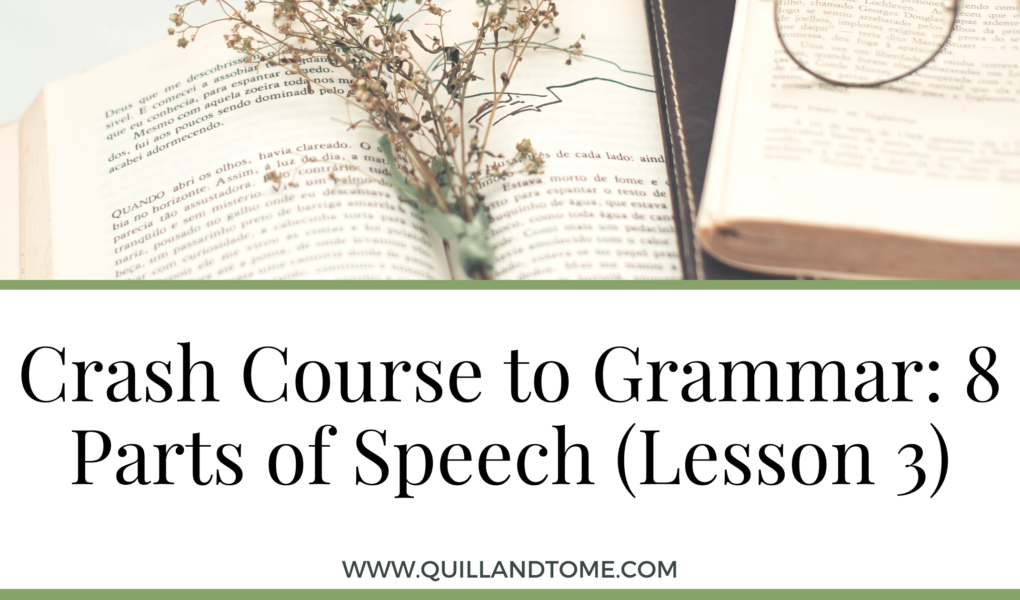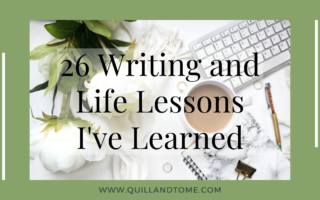Adverbs and Prepositions
For the third lesson of the Eight Parts of Speech, we will discuss adverbs and prepositions. So far we have covered nouns, pronouns, verbs and adjectives, the building blocks needed to construct basic sentences. However, you need to understand how to use all eight parts of speech to take full advantage of the English language and make your writing interesting. Adverbs and prepositions allow you to add more detail to your sentences.
Adverbs
An adverb is a word that modifies a verb, adjective, or another adverb.
Ex. We will stop here.
Here is the adverb describing the verb will stop.
Ex. The soup is extremely hot.
Extremely is the adverb describing the adjective hot.
Ex. The dog barked very loudly.
Very is the adverb describing the adverb loudly.
Adverbs answer one of these 5 questions:
When? (now, after, never, tomorrow, yesterday…)
Where? (here, there, everywhere, nowhere…)
To What Extent? (very, too, also, almost, quite…)
How? (happily, really, sadly, carefully…)
Why? (because it was fun, before the sun came up…)
Adverbial Clauses
Sometimes an entire phrase or clause can act as a single adverb.
Ex. I cleaned the house today.
Today is an adverb modifying the verb cleaned.
It is telling us when I cleaned.
I cleaned today.
Ex. I cleaned the house before the sun came up.
The whole clause acts as the adverb modifying the verb cleaned.
It is still telling us when I cleaned.
I cleaned before the sun came up.
These clauses are called adverbial clauses. They contain a subject and verb, and begin with a subordinating conjunction.
The subordinating conjunction links the entire adverbial clause to the verb, adjective, or other adverb it is modifying in the independent clause.
Adverb clauses are a type of dependent clause called a subordinate clause (they begin with a subordinating conjunction). They do not form a complete sentence and cannot stand alone.
Ex. When? I cleaned the house before the sun came up.
Where? I cleaned the house everywhere that it was dirty.
To What Extent? I cleaned the house as well as I could.
How? I cleaned the house from top to bottom.
Why? I cleaned the house because we are going to have company.
Sentence Adverbs
An adverb or adverbial phrase that expresses the writer’s opinion of the content of the sentence (obviously, unfortunately) or places the sentence in a particular context (technically, actually).
Ex. Obviously, he was in the wrong.
Technically, that is true.
Prepositions
A preposition is a word that shows the relationship between a noun or pronoun and another word in the sentence.
Ex. She hid under the table.
I bought the cake with chocolate frosting.
Those plants grow near water.
Take the medicine with food.
CHECK OUT THE WRITER’S PLANNER BY QUILL AND TOME!
Get the planner and organize your life and your writing!
What you can find inside:
- Plenty of writing space in a vertical layout
- Undated weekly and monthly pages you can start using any day of the year
- Reading and Writing Trackers
- Writing Tips
- and so much more!
Prepositional Phrases
Prepositions are always a part of a prepositional phrase.
A prepositional phrase consists of the preposition and the object of the preposition (the first noun that follows it).
Ex. She hid under the table.
I bought the cake with chocolate frosting.
Those plants grow near water.
Take the medicine with food.
Some prepositional phrases contain only the preposition and the object of the preposition.
Ex. with food
near water
Other prepositional phrases start with the preposition and end with a noun, but also include articles, adjectives, and/or adverbs.
Ex. under the table
with chocolate frosting
Prepositional phrases work together to act as an adjective or adverb, depending on what they are describing.
Adjective: I bought the cake with chocolate frosting.
Since the prepositional phrase with chocolate frosting is modifying cake (a noun), it is functioning as an adjective.
Adverb: She hid under the table.
Under the table is a prepositional phrase modifying the verb hid, so it is functioning as an adverb.
*Note* Just because a word sometimes acts as a preposition, does NOT mean that it is always a preposition. It HAS to be a part of a prepositional phrase to be a preposition.
Over To You
Hopefully, you found this helpful.
If you enjoyed this content and are interested in fitting writing into your daily life, DOWNLOAD THE FREE WORKBOOK! Read our monthly newsletter, full of valuable writing advice and be the first to know when we release a new product or book.







